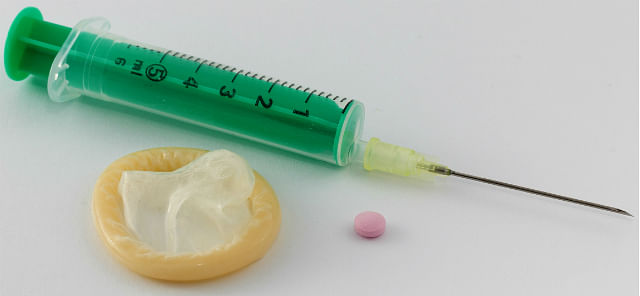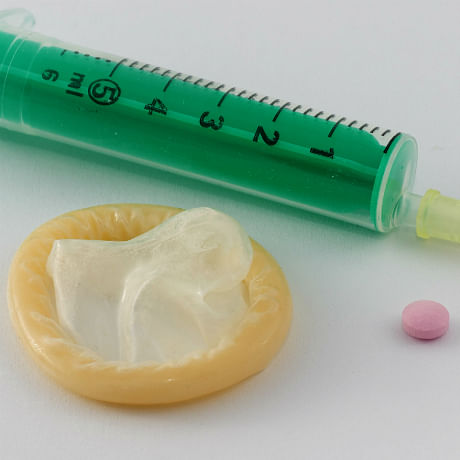With the plethora of options out there, it can get confusing to choose a birth control method. Here’s a rundown of what’s out there and how they might or might not work for you.

MALE CONDOM
How does it work: Usually made of latex, you unroll this over an erect penis before any sex act so that his sperm stays inside the condom when he ejaculates.
Why you should use it: It’s cheap and very easily available. It also protects against sexually transmitted diseases.
Why you shouldn’t use it: If you have an allergic reaction to latex (polyurethane condoms could be an option though) or if it makes you feel very uncomfortable. Also, if you only use oil-based lubricants, condoms aren’t a good idea because they might break.
FEMALE CONDOM
How does it work: You place this ‘pouch’ deep inside your vagina and it stops sperm from entering.
Why you should use it: It’s always best when you’re the one in control of contraception. Plus, it can be inserted up to eight hours before sex so there’s no need for awkward pauses while you’re getting it on.
Why you shouldn’t use it: They can be awkward to place into your vagina and may cause irritation. Also, it’s not as effective as male condoms.
INTRAUTERINE DEVICE (IUD)
How does it work: A small, T-shaped surgically implanted copper device, it prevents sperm from reaching the egg.
Why you should use it: You can keep it in for up to 10 years so you won’t have to worry about birth control at all for a long period of time. And it could make your sex life better and more spontaneous as you won’t have to think about contraception when you want to get it on.
Why you shouldn’t use it: You could suffer from side effects such as more period cramps and heavier PMS symptoms. And, while it’s not very common, the IUD could slip out of place and thus affect your chances of getting pregnant. Also, some doctors recommend this device only for women who have given birth as your uterus is expanded when it’s implanted and might cause pain if you’ve never had children.
DIAPHRAGM
How does it work: You put this dome-shaped device inside your vagina and it prevents sperm from reaching an egg by covering your cervix. It always has to be used with spermicide. You have to visit a doctor to get the right fit for your diaphragm.
Why you should use it: You can put it in up to six hours before sex so it’s easy to use if you’re the type who plans ahead.
Why you shouldn’t use it: For the best protection, the diaphragm should be left in place for six hours after intercourse and this may increase your risk of toxic shock syndrome and urinary tract infections.
HORMONE IMPLANTS
How does it work: This matchstick-sized rod is inserted under the skin of your upper arm by your doctor. It releases a hormone, progestin, which makes cervical mucus thicker so that it’s harder for sperm to get to eggs.
Why you should use it: Implants last for three years (but you can remove it earlier if you want) and are nearly 100% effective.
Why you shouldn’t use it: It might not work as well for women who are overweight or if you’re taking certain medications or the herb St John’s Wort. It also disrupts periods and could possibly affect your sex drive.
BIRTH CONTROL PILLS
How does it work: You pop these oral contraceptives every day and there are two types. The combination pill contains oestrogen and progestin, which stop your ovaries from releasing an egg each month and makes your cervical mucus thicker so it’s harder for sperm and egg to get together. And the progestin-only pill contains progestin, which does the latter. Most women on the pill take the combination pill.
Why you should use it: It’s 99% effective against pregnancy – as long as you take it at the same time every day. It also helps with cramps and acne and makes your periods lighter.
Why you shouldn’t use it: You have to remember to take a pill at the same time every day so if you’re the forgetful type, this wouldn’t be the best form of contraception for you. It also comes with side-effects such as nausea, headaches and mood swings.
Want some more advice about sexual health? Read our stories 15 things you should know about condoms; 7 tips for a healthy vagina and 5 ways to keep your cervix healthy
Image copyright: markdw / 123RF Stock Photo


